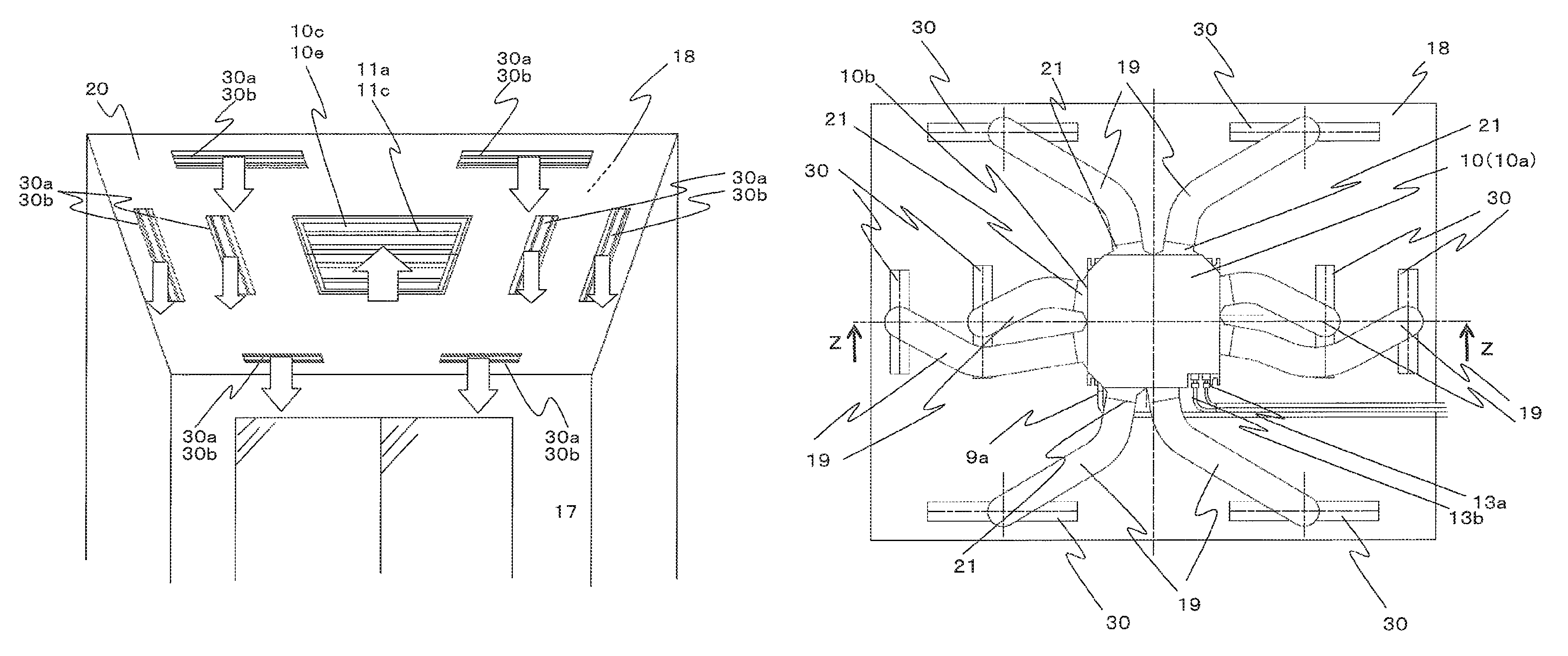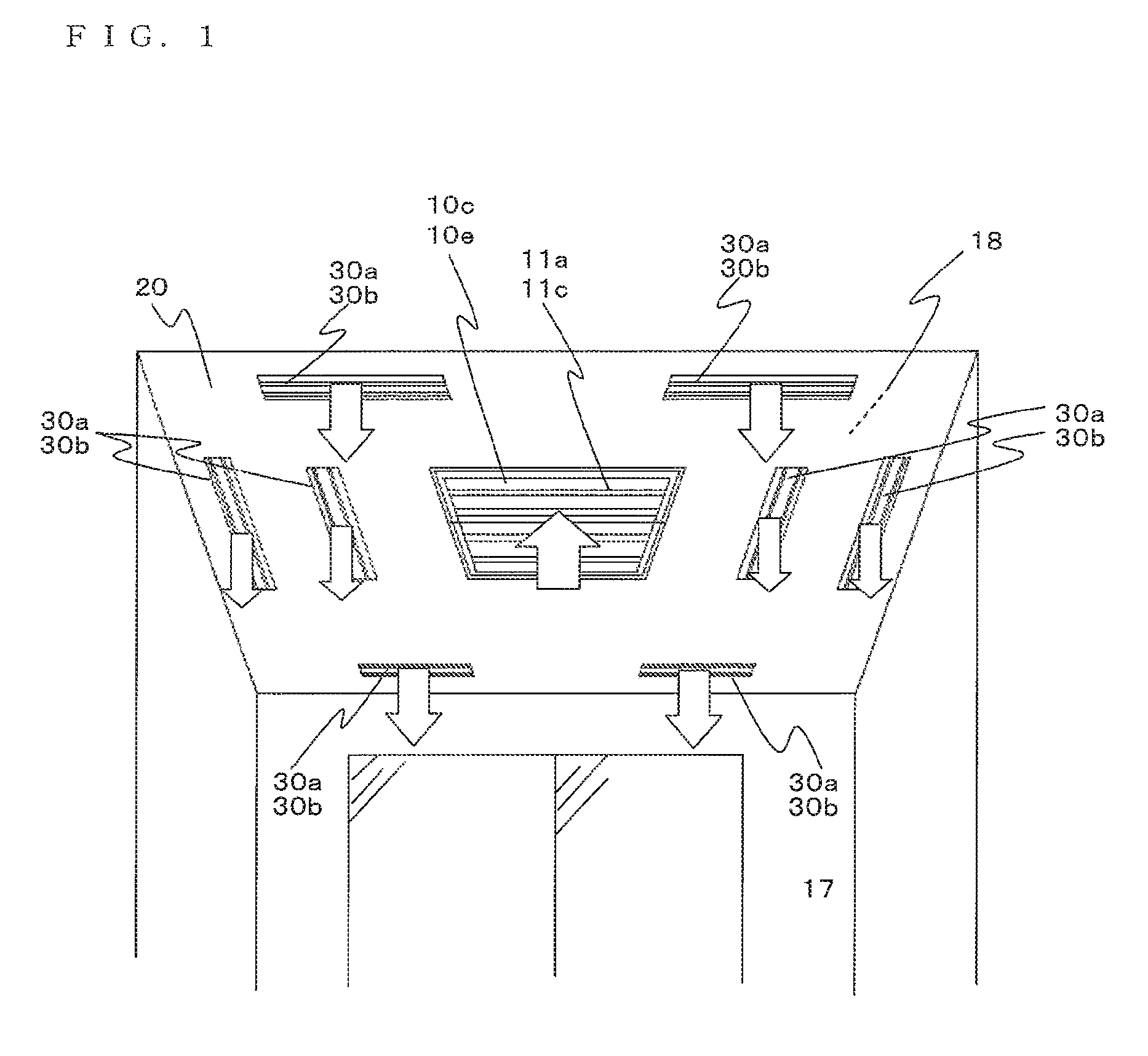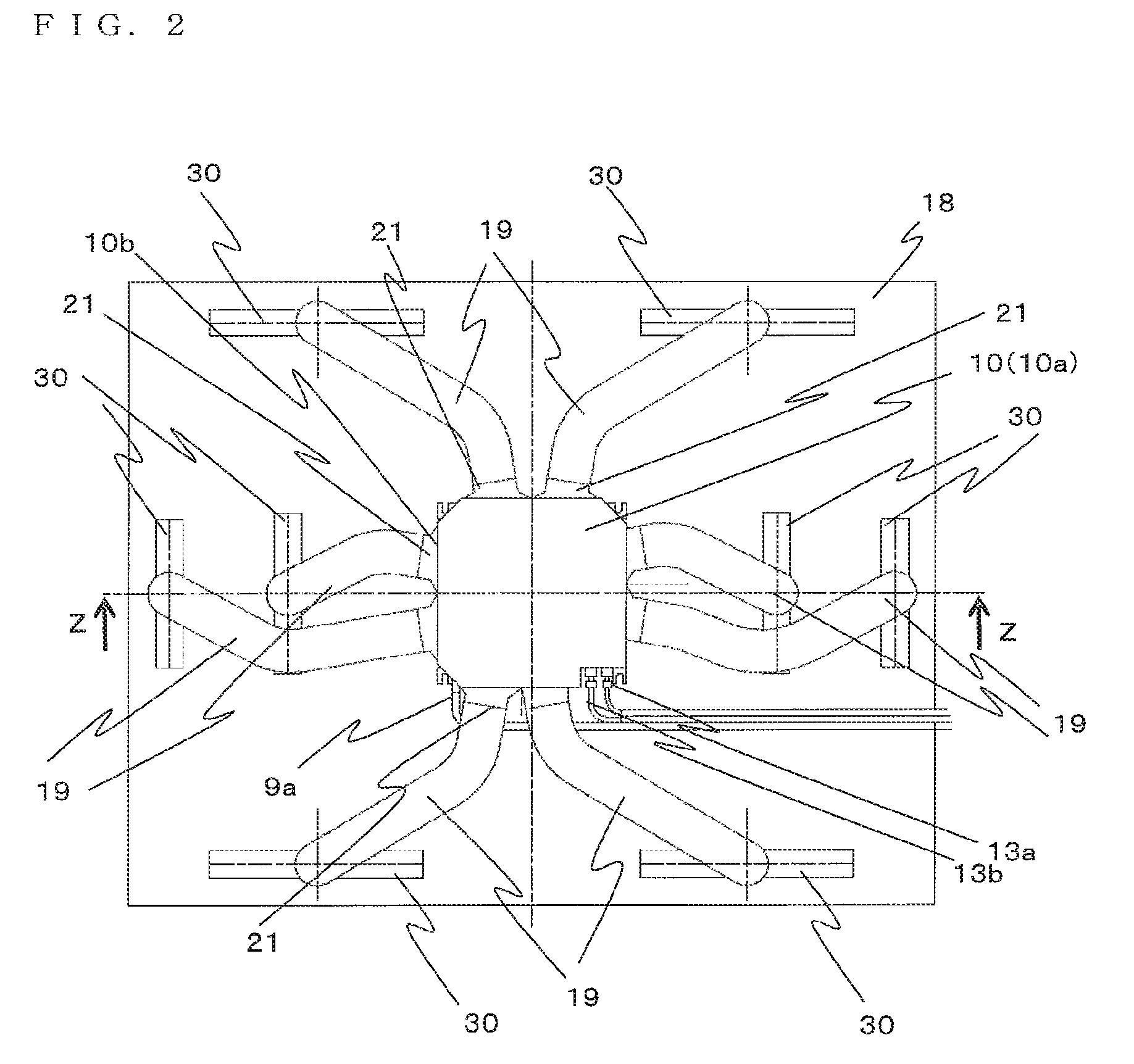Air-conditioning apparatus and configuration of installation of same
a technology of air conditioning apparatus and configuration, which is applied in the direction of domestic cooling apparatus, lighting and heating apparatus, heating types, etc., can solve the problems of long ducts, poor air circulation in indoor spaces, and low comfortability, so as to reduce the torque of the fan motor, shorten the length of each duct, and reduce the effect of ventilation resistan
- Summary
- Abstract
- Description
- Claims
- Application Information
AI Technical Summary
Benefits of technology
Problems solved by technology
Method used
Image
Examples
embodiment
[0031]Referring to the drawings, an air-conditioning apparatus according to the disclosure will be described below.
[0032]FIG. 1 is a schematic diagram (perspective view) of an installation state of an exemplary embodiment of an air-conditioning apparatus according to the disclosure viewed from inside a room. FIG. 2 is a schematic diagram (plan view) of the installation state of the air-conditioning apparatus according to the disclosure viewed from a space above a ceiling. FIG. 3 is a longitudinal sectional view taken along the line Z-Z of FIG. 2. FIG. 4 is a cross sectional view of a body casing of an indoor unit of the air-conditioning apparatus taken along a virtual plane orthogonal to a rotation shaft of a centrifugal fan (a turbo fan, for example). FIG. 5 is an arrow view taken in the direction of an arrow Y of FIG. 4. FIG. 8 is a refrigerant circuit diagram of the air-conditioning apparatus illustrated in FIG. 6.
[0033]An indoor unit 50 of an air-conditioning apparatus 100 accor...
PUM
 Login to View More
Login to View More Abstract
Description
Claims
Application Information
 Login to View More
Login to View More - R&D
- Intellectual Property
- Life Sciences
- Materials
- Tech Scout
- Unparalleled Data Quality
- Higher Quality Content
- 60% Fewer Hallucinations
Browse by: Latest US Patents, China's latest patents, Technical Efficacy Thesaurus, Application Domain, Technology Topic, Popular Technical Reports.
© 2025 PatSnap. All rights reserved.Legal|Privacy policy|Modern Slavery Act Transparency Statement|Sitemap|About US| Contact US: help@patsnap.com



